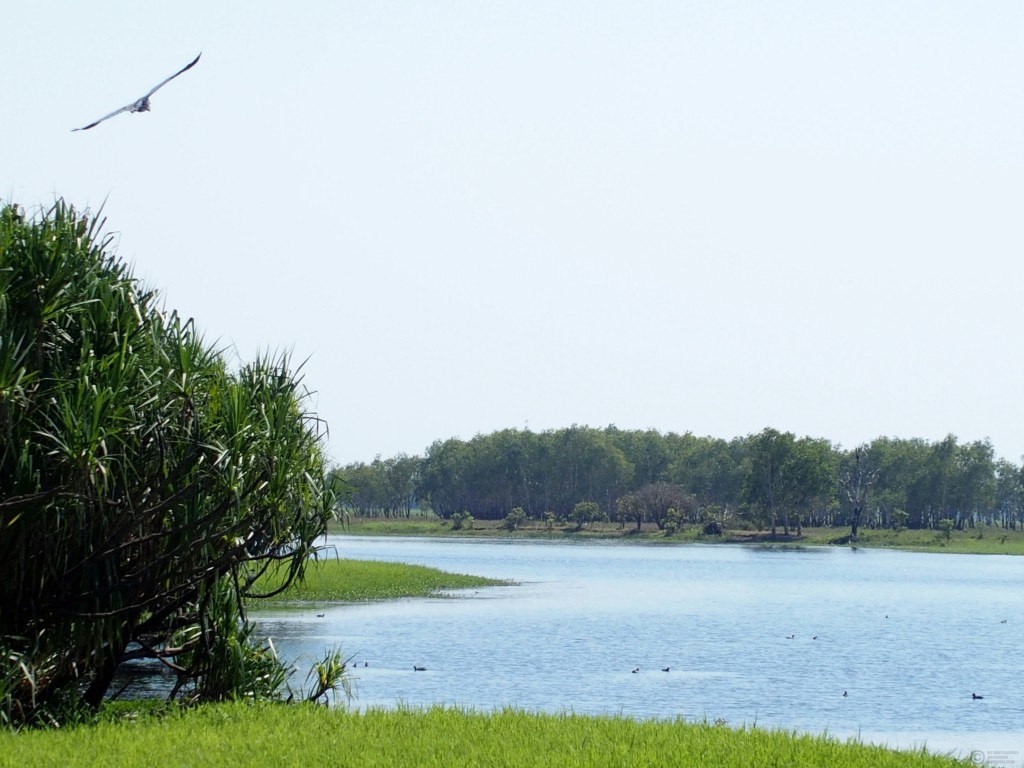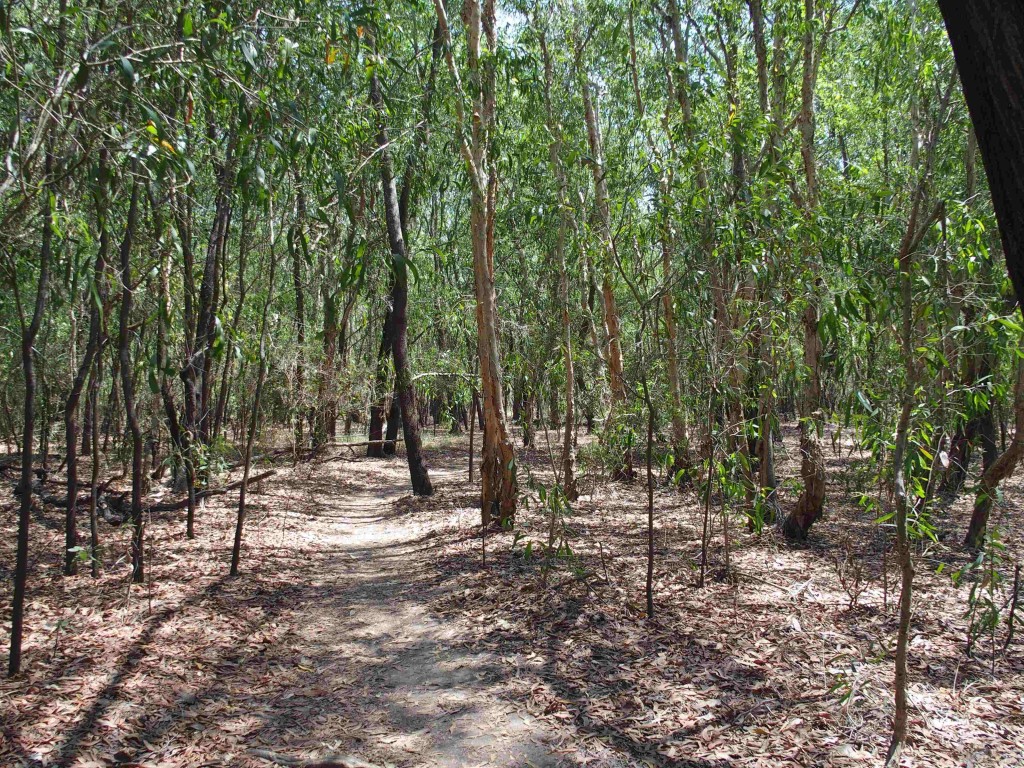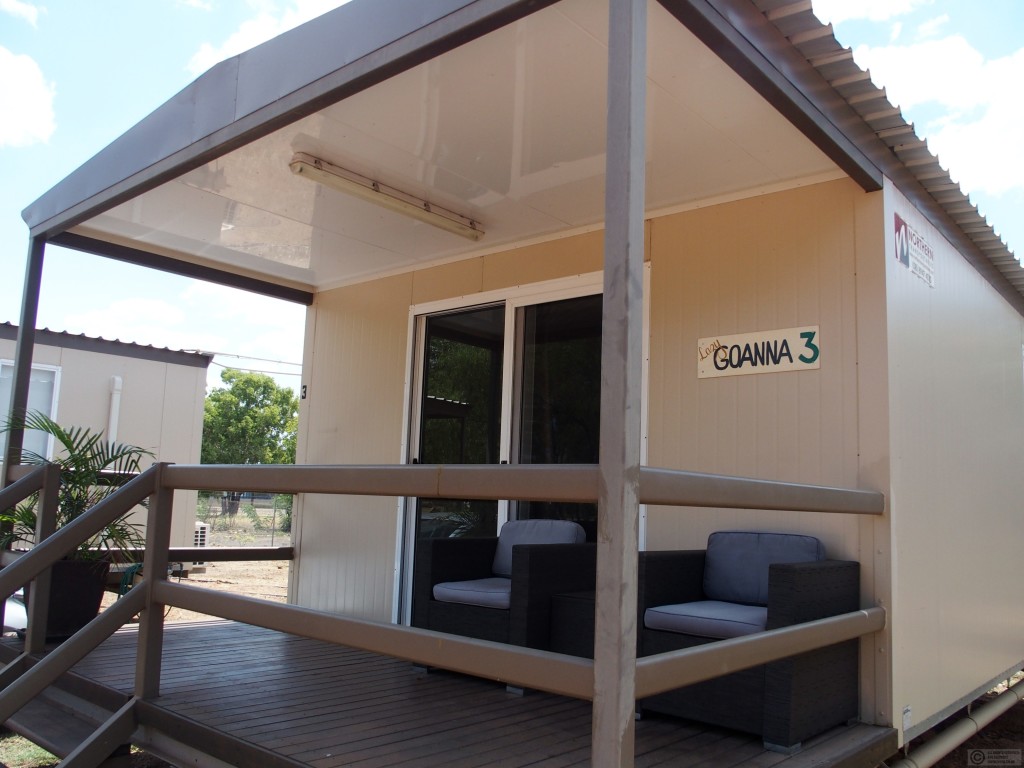The change to our schedule caused by the burglary meant that we had an extra day between Kakadu and our flight to Alice Springs. Rather than spend it in Darwin we decided to detour south and loop back to Darwin via the Kakadu Highway, stopping overnight at Pine Creek. That made it more logical to visit Yellow Waters en route, rather than doing a return trip from Jabiru – we were already going to be well over our hire car’s included mileage allowance as it was.
Cooinda is one of Kakadu’s three accommodation sites. It’s convenient for Yellow Waters but remote from anywhere else, and you have no choice but to eat in the hotel restaurant, so I was glad we’d chosen to stay in Jabiru.
I’m not sure why Yellow Waters is so named – the water looked pretty blue to me. A raised metal walkway led past the jetty from where the cruise boats leave. A boat trip would have been fun, but not at £35 each. The boats obviously headed east, where the lake was wide and weed free, but to the west it narrowed to a shallow, stagnant creek. The overhanging trees were busy with small birds. The bank on the far side had recently burned, and smoke drifted from a few smouldering patches. We’d got used to seeing burnt areas now, but the deliberate burning takes places early in the dry season – at this late stage it was probably an accidental fire.
The metal boardwalk ended after a few hundred metres. Normally a path leads off to Cooinda, a kilometre away, but it was closed – feral pigs had grubbed up the land surface, destroying the vegetation.
The nearby Warradjan Visitors’ Centre focused on aboriginal culture, and the exhibits on their food and the uses they made of the natural resources were especially interesting.
A little further along the Kakadu Highway we turned off towards the Mardugal campsite. A narrow, winding track led through dry forest to a deep green lake with high, steep banks. The trees around were lusher and greener than usual and the water looked cool and inviting – but only a fool would swim in it.
The drive to Pine Creek took almost 2 hours across a landscape of ridges and escarpments. The trees were shorter and spindlier here, suggesting drier conditions – I suppose the monsoon rainwater flows back towards the sea, so the lowlands stay wet longer.
We considered filling up with petrol at the Mary River Roadhouse, but they only sold “opal” petrol and we weren’t sure it was OK for our vehicle. I read later that it’s a low-aromatic petrol designed to reduce the incidence of petrol-sniffing among remote indigenous communities – it would have been fine to use, but fuel efficiency is worse than normal unleaded. The Roadhouse had accommodation, but it was a pretty isolated, god-forsaken kind of place to stay. Although the Kakadu Highway is one of the major roads of the Top End, we only passed an oncoming vehicle every 10-15 minutes.
I didn’t need the map to know when we were approaching Pine Creek because advertising signs started to appear. After so long in the wilderness they looked odd and out of place. Alongside the road into town lay the remains of old, rusting railway equipment, reminders of when the railway from Darwin terminated there. Now that the Ghan line bypasses the town, it seems a rather forlorn place.
The Lazy Lizard was mainly a caravan and camping site but we had one of the few comfortable portakabins, complete with bathroom, kitchen, dining table, and comfy chairs on the verandah. The site was full of birds, especially green and orange parakeets – across the road, a huge colony of fruit bats hung in a large tree. Ah Toy’s Store, which was supposed to be the town’s main supermarket looked permanently closed, but the Lazy Lizard had its own well stocked shop. Only the swimming pool let the place down slightly, being small, cloudy, and very uninviting. But for one night, it was more than fine, and we settled down on the verandah with a sundowner to watch the birds and bats as dusk fell.








